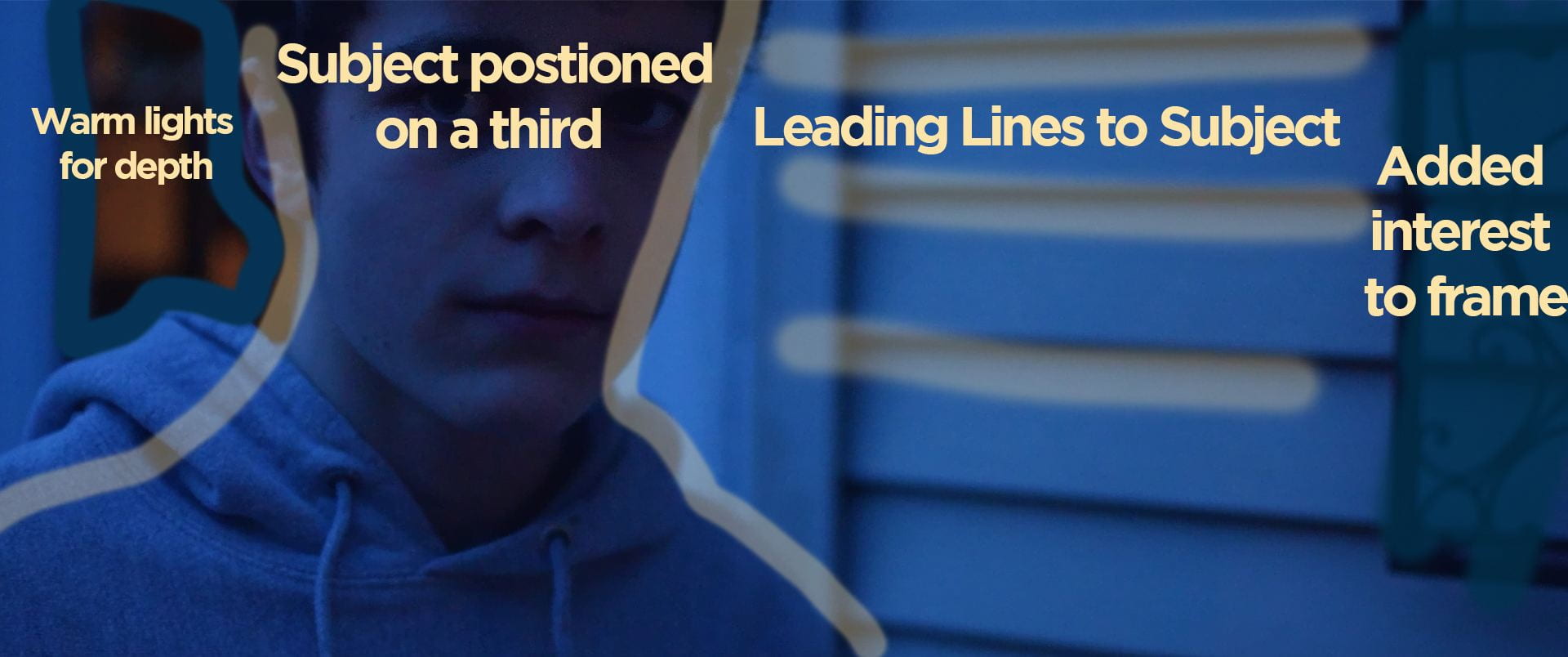In-depth Post 5
Hello, and welcome to my fifth, and penultimate in-depth blog post. While my progress has slowed since the last post, I was still able to meet with my mentor, and practice some lighting and editing techniques.
My meeting came with my mentor last weekend, and we continued to work on editing alongside learning and talking a bit about composition and shot selection. In preparation for our meeting, I shot a short sequence of clips that outlined the making of a smoothie. Together, we collaboratively edited these clips together to work on continuity in cuts, as well as sequencing. As a byproduct of this, we identified shot selection and compositions that worked and detailed points where I could’ve added shots from different angles that would better the final result. This meeting by far was one of the most informative for me, as I learned a lot about cutting shots together, as well as knowing when to use what clips. What I found most interesting from this meeting though, was that while there is no ‘right’ way of ordering shots, some ways just work better than others. For my mentor, his many years of experience have given him an almost innate understanding of how to place the shots together for the best possible result. For me, this comes a lot less naturally, though it is something I can pick up from practicing more.
While we did spend our meeting editing, the state of the video is nowhere near completion, and it is not something that is really ready to be shared. It was more of a training exercise than anything else. For my next meeting, I am planning on shooting another similar sequence, but this time with more of a narrative to share.
During the last few weeks, I also had time to study some lighting in my free time. While I still haven’t built a DIY video light, I experimented with some natural lighting during blue hour and got some cool results. The focus was not the best because it was hard to film myself, but I was happy with the result.
Here is a break down of the composition in the frame:
I intend to try to build some sort of a DIY light setup to experiment with by the next blog post.
How to Have a Beautiful Mind:
In How to Have a Beautiful Mind, De Bono discusses the idea of “The Six Hats.” “The Six Hats” idea is a way of thinking that uses different colors to describe different ways of approaching and thinking about a certain situation. These hats are:
The white hat: A conversation or approach that covers facts.
The red hat: A conversation or approach that follows feelings.
The black hat: An approach that covers critical thinking.
The yellow hat: An approach that follows benefits, values, and how something can be done.
The green hat: Covers creating time and expectation for creative effort.
The blue hat: Organizes the ways of thinking.
While it is hard to quote a ‘section of conversation between my mentor and I’ because our conversations take the form of us experimenting with the timeline of whatever video we are editing, before giving our thoughts briefly, and playing around with it a little more, here are some examples of “The Six Hats” within our conversation(s).
My mentor: These shots of the fridge allow us to see what the character is doing, and convey information well (white hat), but I feel as if it would work better if the shots were more into the scene and personal (red hat). Something like putting the camera in the fridge might add some creativity and show more expression on the character’s face (yellow hat).
Me: Yeah, I see what you mean. In order to create such a shot, I can actually use a mini tripod I have access to, so it is something that is definitely viable (black hat).
Later —
My mentor: I think the editing going into close-ups, and out to wide shots builds a good pace (red hat), but the wide shot from behind just shows the subject’s back, blocking some of the important actions that are happening (white hat). Try to get creative with your compositions and shots from different angles such as the side which can show more of the subject (green hat).
Me: That makes sense. There are always constraints with space that prohibited me from showing the subject with some angles (black hat), but I definitely agree, and feel adding more functional and creative angles would really bring us into the scene, and the subject’s actions (red hat).
Thanks for reading my blog post.
-Evan


0 comments on “Filmmaking: In-Depth #5” Add yours →